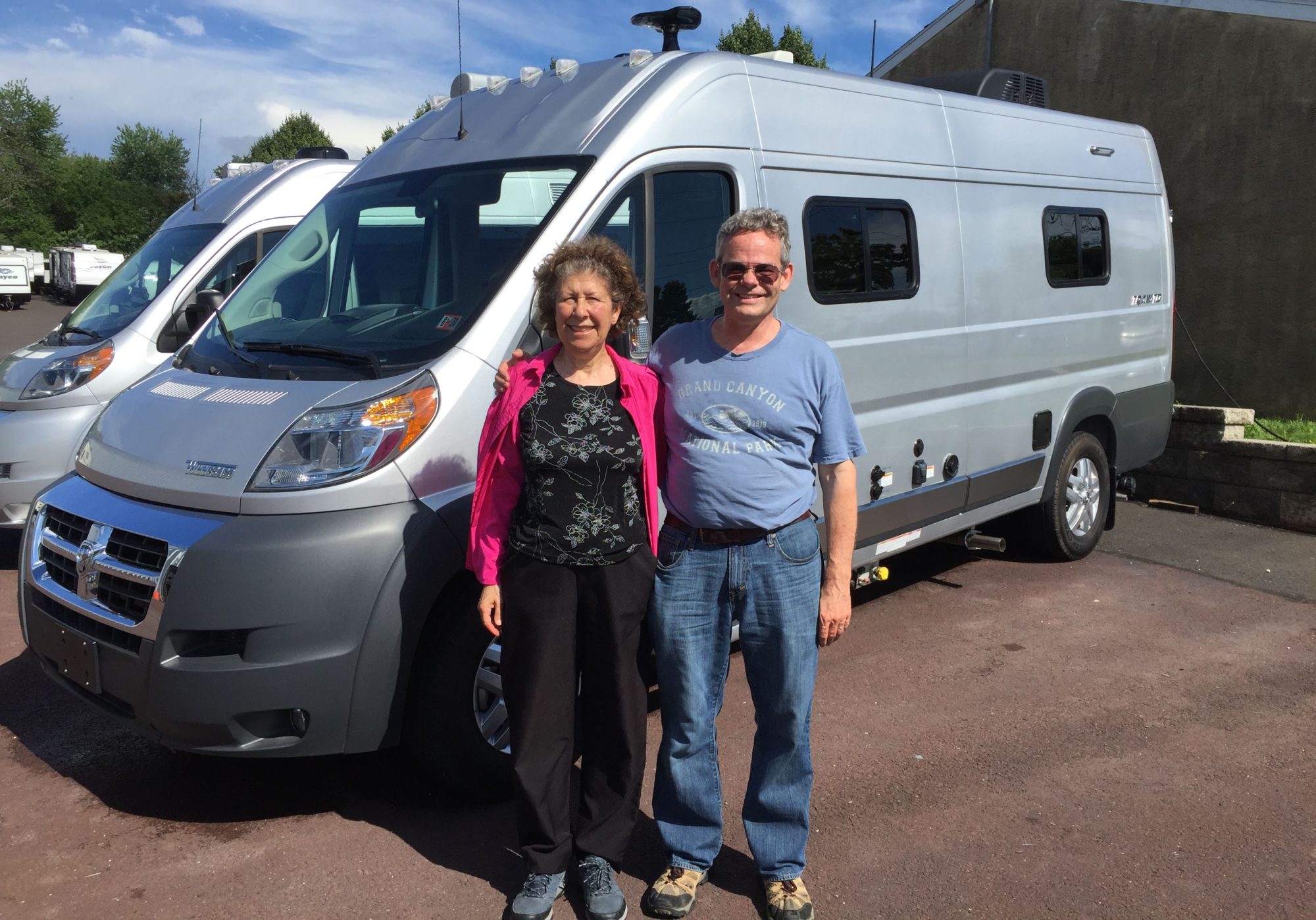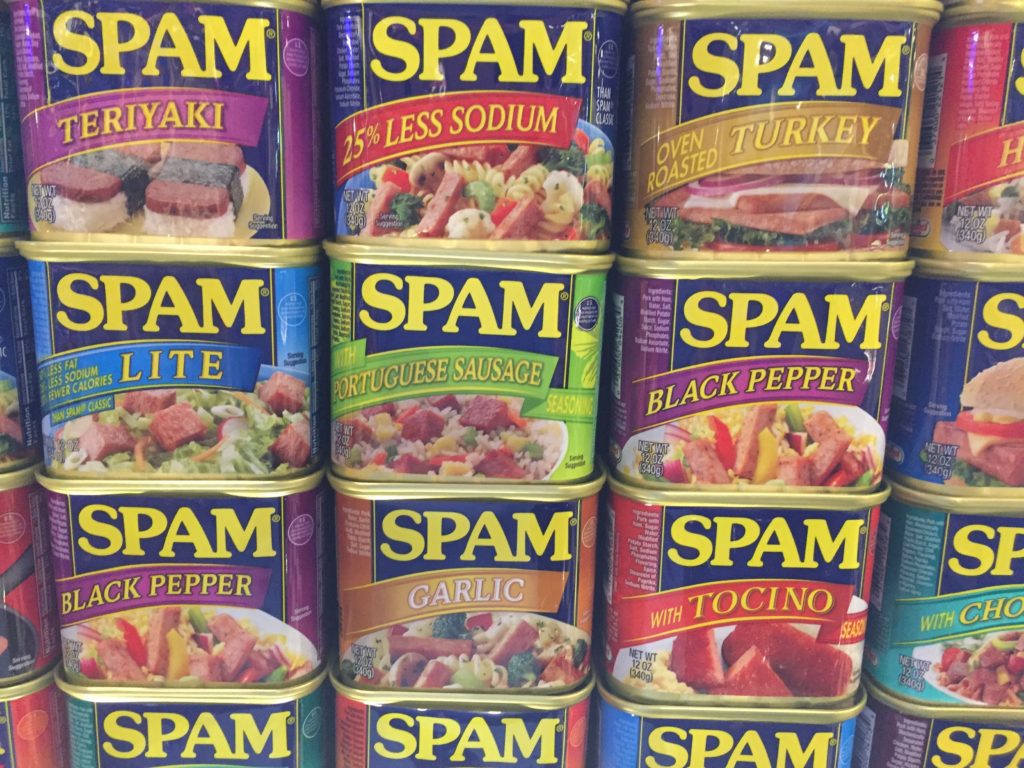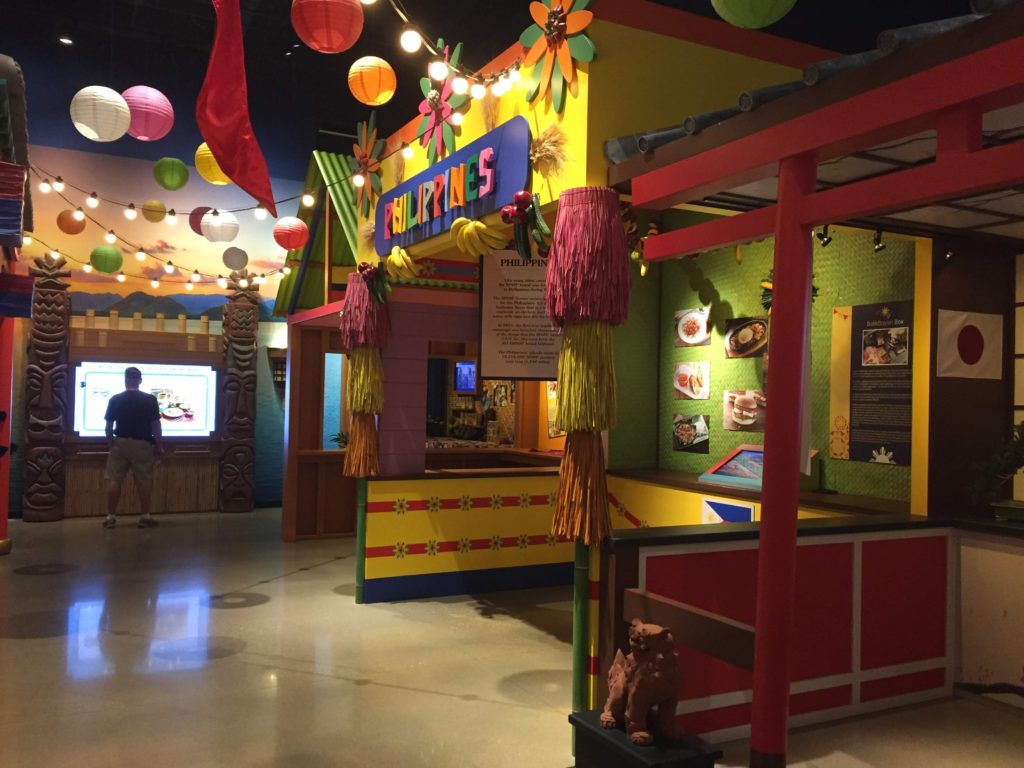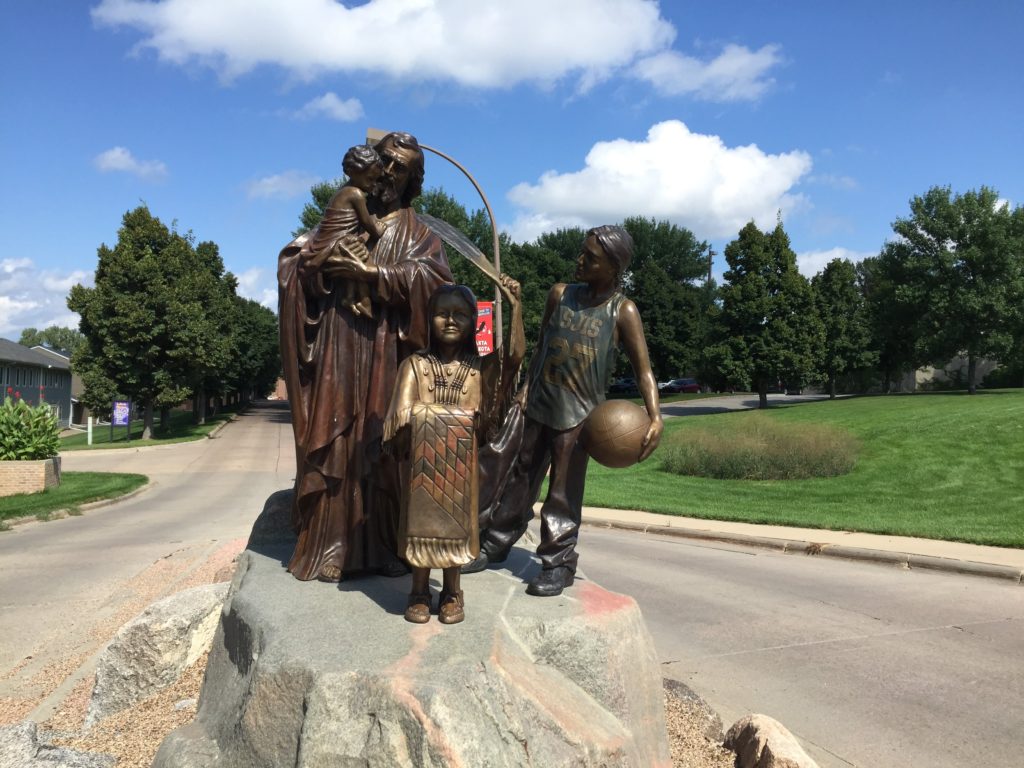
We left Kadoka with no particular sightseeing plans. However, we were attracted by a billboard advertising the Akta Lakota Museum run by St. Joseph’s Indian school in Chamberlain. They had a nice display of quilled, painted and beaded artifacts, and some information about traditional Sioux attitudes towards child-rearing.
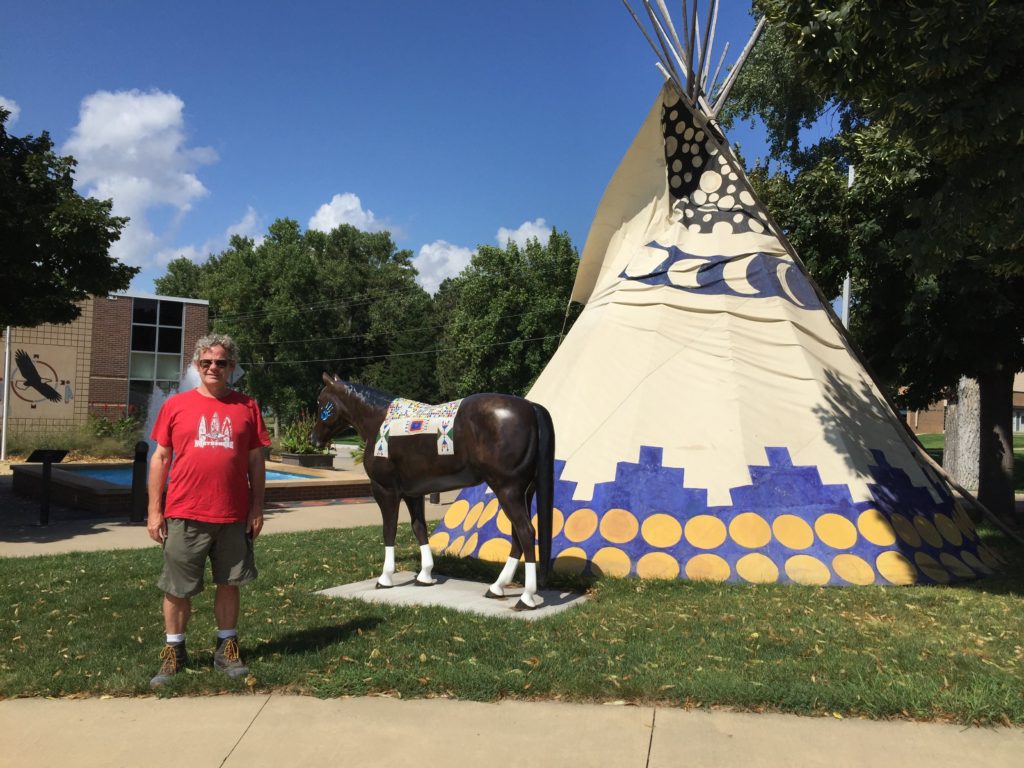
There was also a display of the history of treaties in the area — too depressing really. There was also a section about the history of St. Joseph’s, from the point of view of the folks running it, along with some (not very deep) discussion of the roles of the school in suppressing Lakota culture (up to 1950) and then helping preserve it (after 1950).
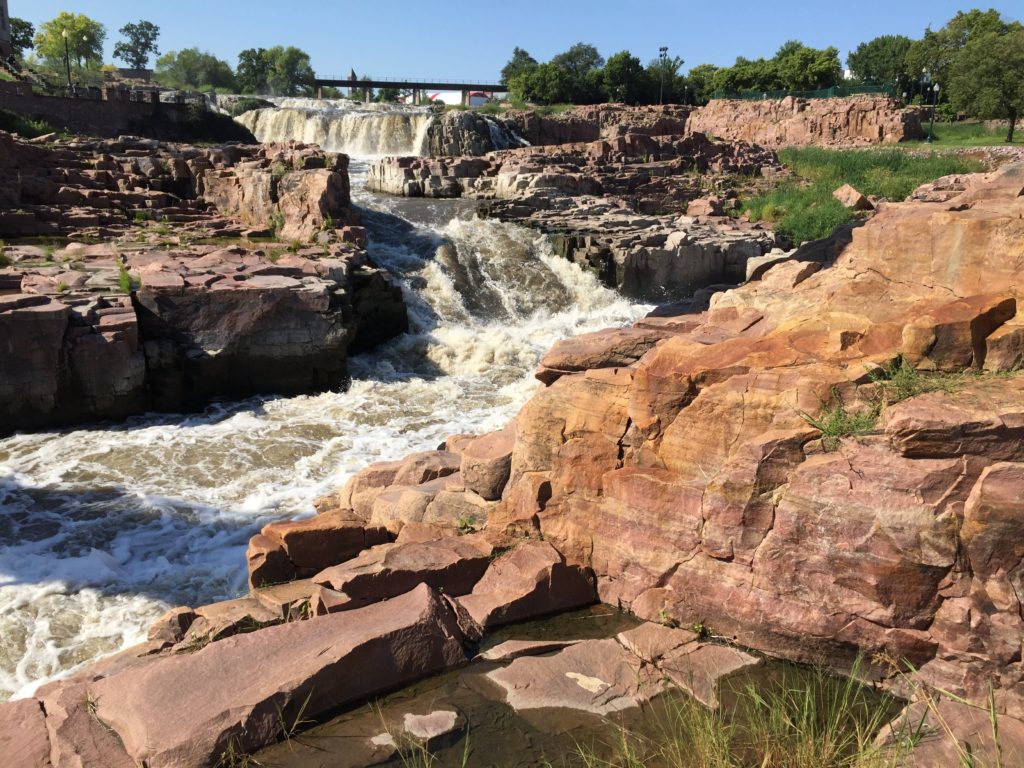
We spent the night at a state recreation area just outside of Sioux Falls, and then went to see the eponymous falls. This is a very pretty set of 2 waterfalls flowing over bright red quartzite. There were 3 falls, but the lower falls were quarried to use the quartzite as building stone (and there are a lot of red quartzite buildings and walls on the site).
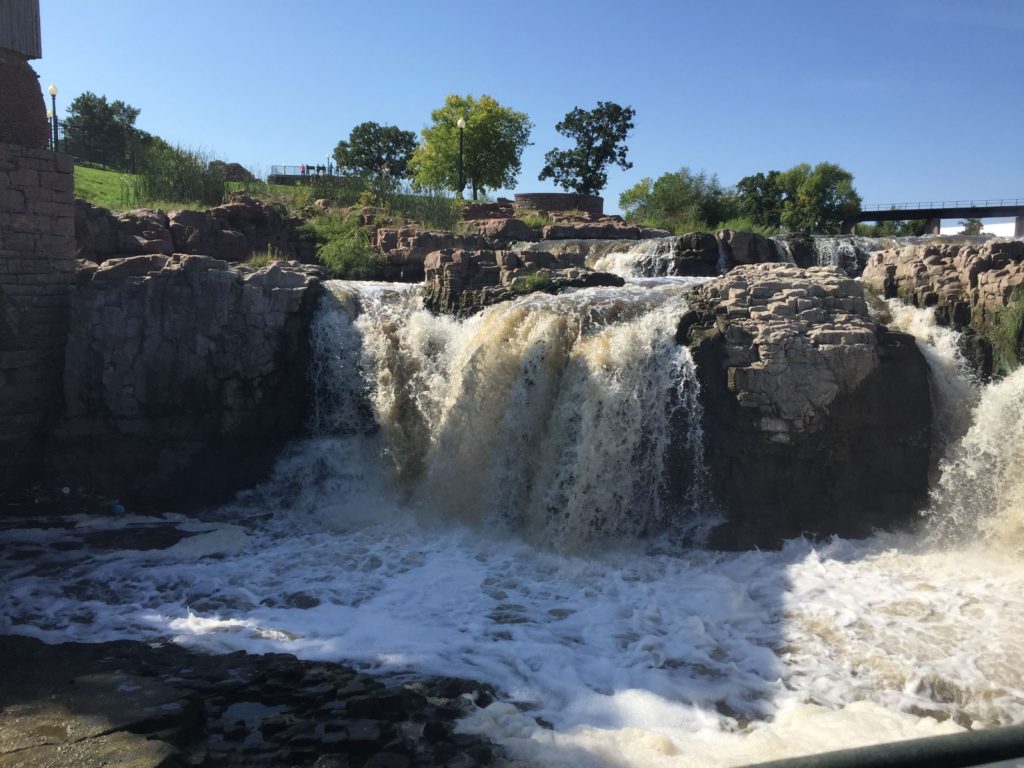
The flow of water is impressive — it was a very wet year. However, apparently there was not enough water in a typical year to power the grain milling operation and hydro-electric generator that were build to take advantage of the river. The grain mill went out of business in only 2 years.
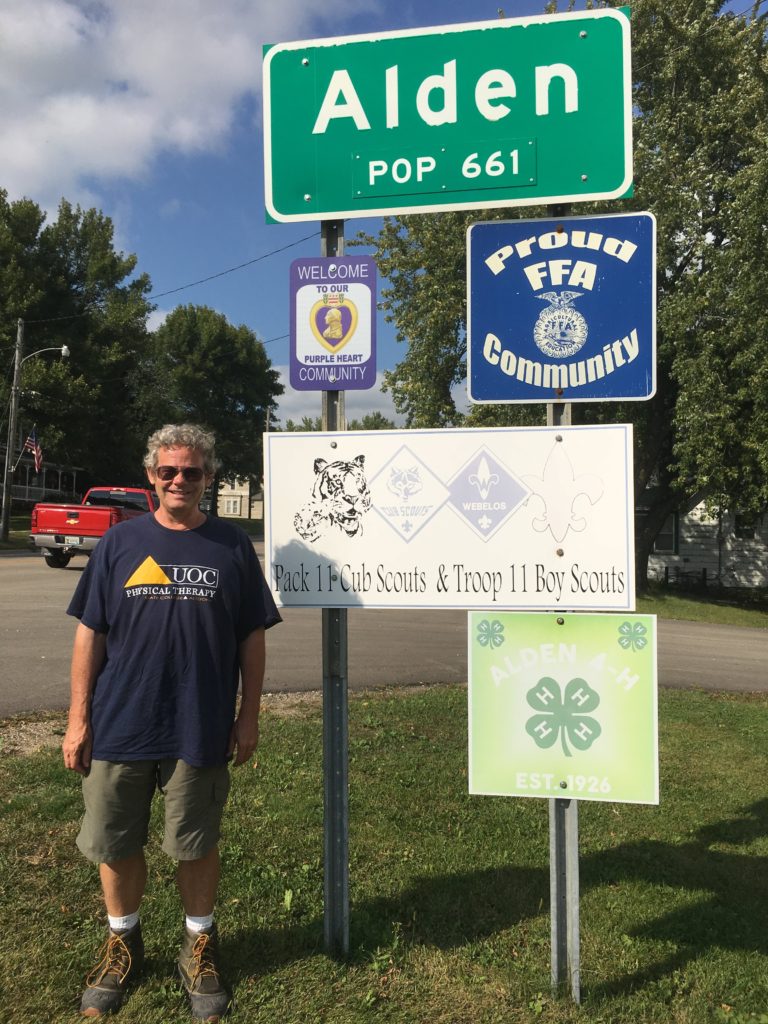
Fortunately we left Sioux Falls for Rochester MN before lunch. Overnight, a serious tornado struck the city, destroying several buildings, taking out the power and closing roads until debris could be removed. Although the campground was not directly affected, the road to the campground crosses the center of the area that was hit.
As a child, Chuck’s father lived for 6 months in the small town of Alden MN. Since it was on our route, we decided to stop for a snack. Alden has 3 restaurants (which we thought was a lot for a town this size). Two of them were lunch places and close at 3 p.m. One is a dinner place and opens at 5. We got there at 4. No snack for us. Perhaps that explains our next stop.
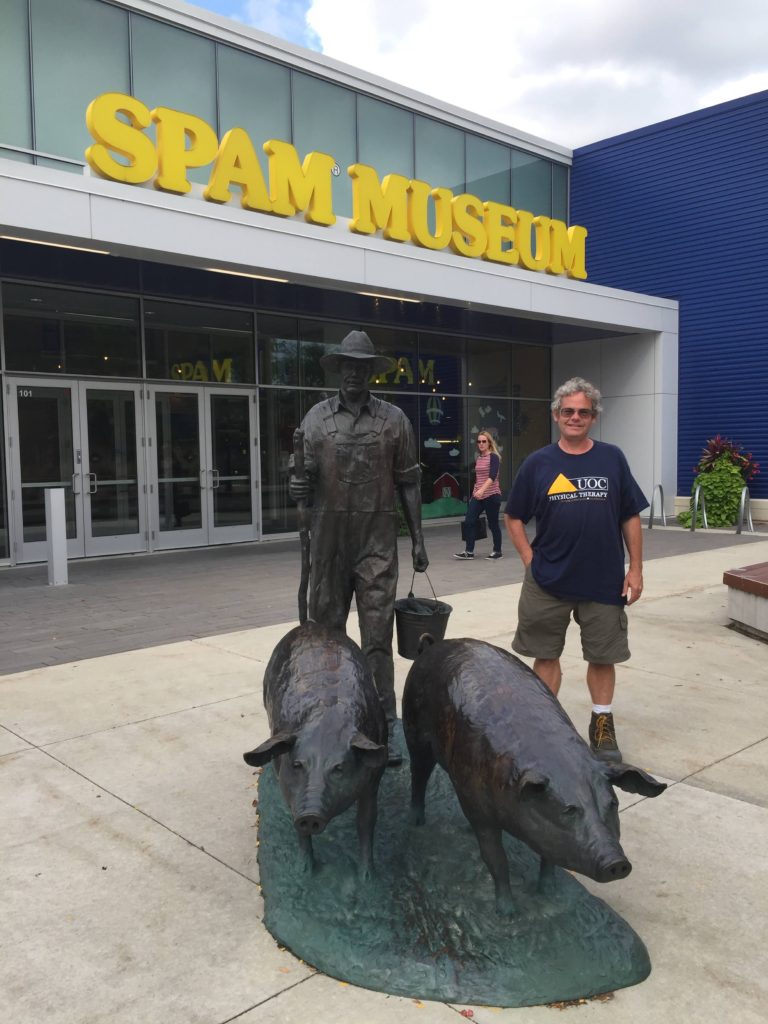
Going by Austin MN, we saw the advertisement for the Spam Museum (the food). I never tasted Spam growing up, as it certainly is not kosher. But I do remember eating it in college. In any case, I could not resist.
Spam came into its own during WWII, where it was part of the rations of the US troops. It is now extremely popular wherever the troops were stationed, and is a staple in some places, such as Hawaii. The museum did not offer free samples, but it did give a history of the Hormel Food Corporation, information about how Spam is manufactured, a history of the role of Spam in WWII and a look at Spam internationally.
We spent the night of Sept. 10 just outside Rochester, the home of the Mayo Clinic. Overnight, the same storm system that hit Sioux Falls passed over us, although neither the winds nor the rain were as heavy as predicted. We did not get much sleep, but otherwise there were no problems.
